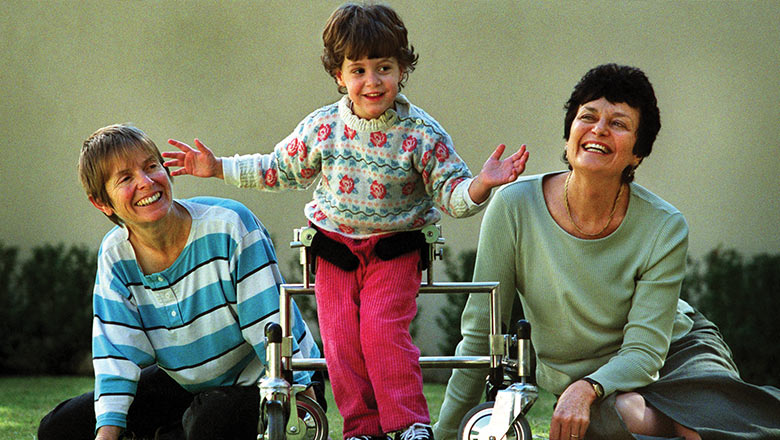Search
Research
Chronic Pain in Young People with Cerebral Palsy: Activity Limitations and Coping StrategiesTo describe the effect of chronic pain on the activities of children and adolescents with cerebral palsy, to describe coping strategies, and to examine associations between effect of pain on activities, coping strategies, and level of pain.
Research
Functional outcomes in children and adolescents with neurodisability accessing music therapy: A scoping reviewTo determine the evidence for functional outcomes experienced by a population with paediatric neurodisability (such as acquired brain injury, cerebral palsy, spinal cord injury, and other neurological disorders), who access music therapy through neurorehabilitation services across the rehabilitation spectrum.
Research
Key elements of Goal-Directed Training for children with cerebral palsy: A qualitative content analysisGoal-directed training is an evidence-based occupational therapy intervention for children with cerebral palsy targeting motor performance and goal attainment. There is variability and limited description on goal-directed training delivery within the studies who found it a successful intervention. The aim of this study was to establish the who, what, why and how of goal directed training according to practicing occupational therapists.
Research
Cerebral palsy trends in Australia (1995-2009): a population-based observational studyBirth prevalence of CP declined. Encouragingly, the percentage of children with CP whose disability was moderate to severe also decreased
Research
Strabismus, a preventable barrier to social participation: A short reportIsolated strabismus does not significantly impair visual functionality and has traditionally been considered a primarily cosmetic defect of little importance.
Research
Application of Inertial Measurement Units and Machine Learning Classification in Cerebral Palsy: Randomized Controlled TrialCerebral palsy (CP) is a physical disability that affects movement and posture. Approximately 17 million people worldwide and 34,000 people in Australia are living with CP. In clinical and kinematic research, goniometers and inclinometers are the most commonly used clinical tools to measure joint angles and positions in children with CP.
Research
Antecedents of cerebral palsy and perinatal death in term and late preterm singletonsThe odds of total cerebral palsy after potentially asphyxial birth events or inflammation were modestly increased.
Research
Eating and drinking abilities and respiratory and oral health in children and young adults with cerebral palsyTo investigate the potential risk factors of respiratory illness (ethnicity, oral health, and eating and drinking ability) in children and young adults with cerebral palsy.

News & Events
Changing the focus of cerebral palsyCerebral palsy is not only the result of birth trauma and the lack of oxygen supply during delivery.
Research
Confident and Trustworthy Model for Fidgety Movement ClassificationGeneral movements (GMs) are part of the spontaneous movement repertoire and are present from early fetal life onwards up to age five months. GMs are connected to infants' neurological development and can be qualitatively assessed via the General Movement Assessment. In particular, between the age of three to five months, typically developing infants produce fidgety movements and their absence provides strong evidence for the presence of cerebral palsy.
